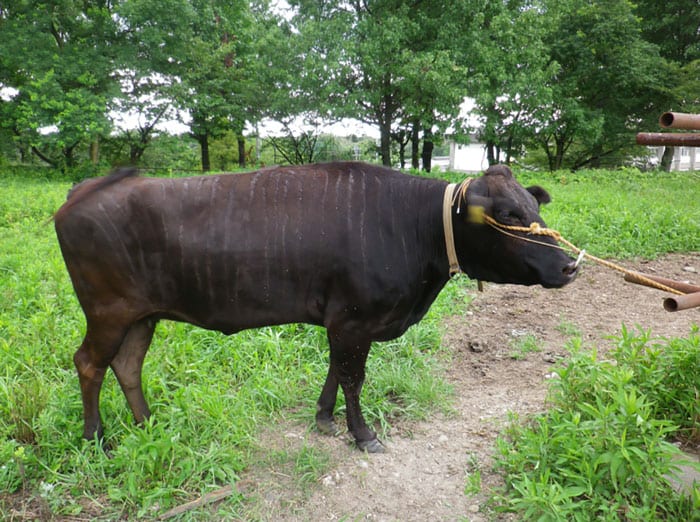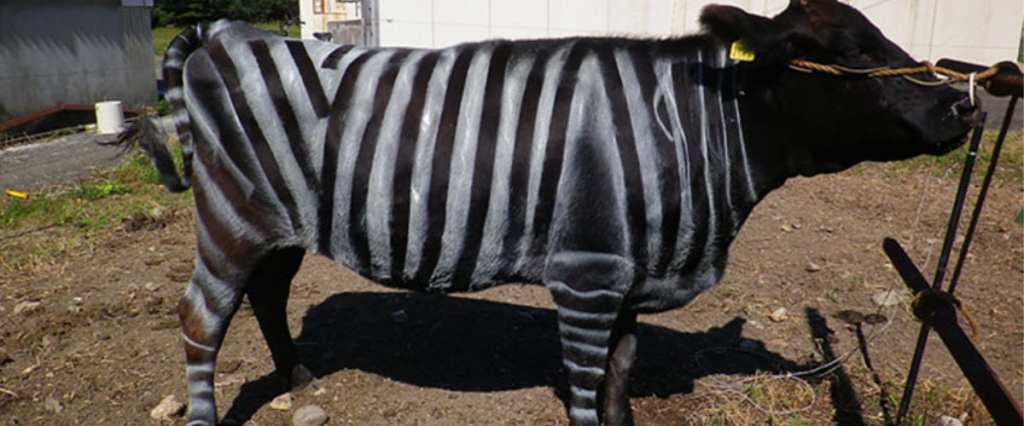If you’ve ever wondered whether or not scientists do things on a lark that end up creating a breakthrough, well, look no further for your answers than ‘.
Tomoki Kojima, who conceptualized the study and was responsible for gathering and analyzing the data, confided to Bored Panda that his co-authors originally thought he was making a joke by suggesting they paint zebra-like stripes on cows.

Image Credit: PLOS.org
His inspiration? A Japanese television program that informed him on the actual function of zebra stripes.
Some scientists believe the stripes help zebras hide from flies and other pests, while others think that the stripes are more like camouflage to assist in hiding from predators. A third theory posits that they’re a natural cooling system essential for survival in Africa.

Image Credit: PLOS.org
Kojima began to read papers on the subject, which led him to wonder whether the same principle would apply to cows.
It turns out, there’s something to it.
Right now, farmers and animal husbandry experts use harmful pesticides to keep biting flies and other insects away from cows, but, as researchers tested the effectiveness of the stripes learned, there might be a better way.
The stripes are cheaper, healthier, and more environmentally friendly. They keep the cows happy and the flies away, so what’s not to like?
“As a researcher of animal husbandry, I hope that the method will be used by farmers and lead to contribute to improving their productivity,” says Kojima.
To reach these conclusions, scientists recorded how often the cows were bitten with their own, unpainted skin, and how often they were bitten with the painted stripes. They found that the stripes “significantly” lowered the number of annoying and painful bites.
Kojima is excited about the potential outcomes of their study for a few reasons.
“As we mentioned in our paper, we will start to develop more effective techniques to make cows’ body surface black-and-white stripes more easily and to ensure the persistence of black-and-white stripes on livestock during the biting fly season, in order to apply this method to animal production sites.”
Kojima and others like him are also excited to apply it in different ways in the future.
“Firstly, I want to apply the method to swine. In addition, a previous study reported spotty coat (diameter is smaller than approximately 10 cm) also has the same effect as zebra stripes, therefore, I want to investigate the effect using Holstein cows painted with small spots.”
In a society that’s increasingly concerned with both how animals are treated and the harmful effects of pesticides, this study is likely to be welcomed with open arms.






